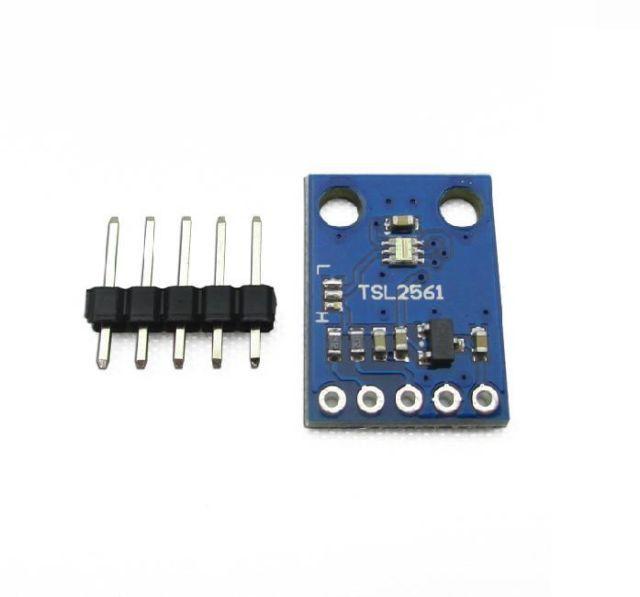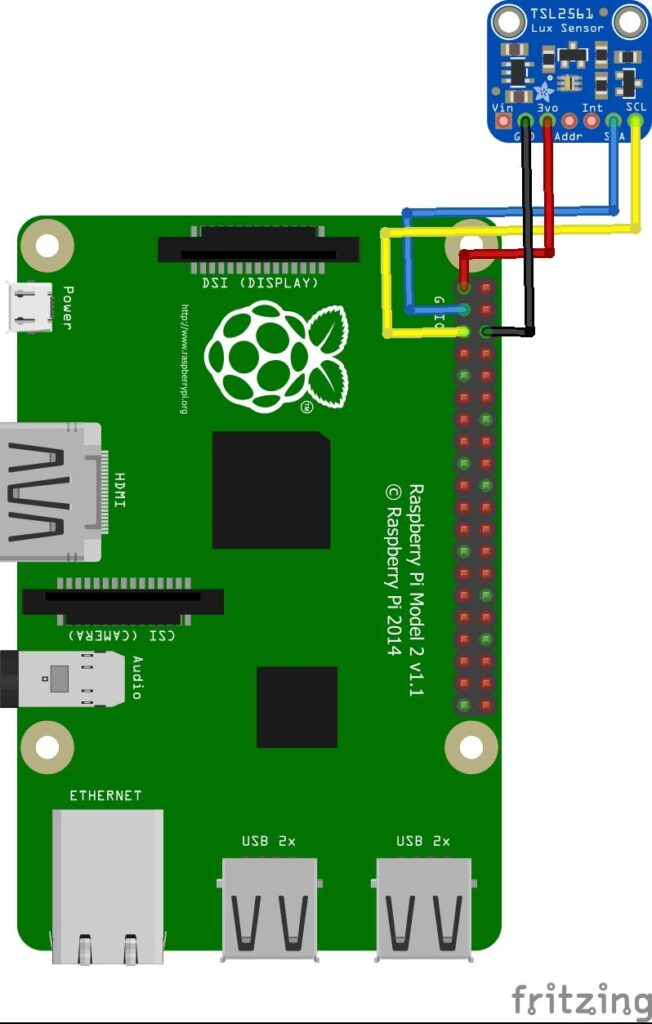This TSL2561 is an I2C light-to-digital converter TSL2561 that transforms light intensity to a digital signal. The TSL2561 features a selectable light spectrum range due to its dual light sensitive diodes: infrared and full spectrum. You can switch among three detection modes to take your readings. They are infrared mode, full spectrum and human visible mode.
When running under the human visible mode, this sensor will give you readings just close to your eye feelings.
Features
Selectable detection modes
High resolution 16-Bit digital output at 400 kHz I2C Fast-Mode
Wide dynamic range: 0.1 – 40,000 LUX
Wide operating temperature range: -40°C to 85°C
Programmable interrupt function with User-Defined Upper and lower threshold settings
Here is a typical module that makes it easier to work with the sensor

Layout and Connection
| Device Pin | PI |
|---|---|
| GND | GND |
| Vcc / 3.3 | 3.3v |
| SCL | D1 |
| SDA | D2 |
| ADDR | N/C |
| Int | N/C |
Code
[codesyntax lang=”python”]
import smbus import time # Get I2C bus bus = smbus.SMBus(1) bus.write_byte_data(0x39, 0x00 | 0x80, 0x03) bus.write_byte_data(0x39, 0x01 | 0x80, 0x02) time.sleep(0.5) data = bus.read_i2c_block_data(0x39, 0x0C | 0x80, 2) data1 = bus.read_i2c_block_data(0x39, 0x0E | 0x80, 2) # Convert the data ch0 = data[1] * 256 + data[0] ch1 = data1[1] * 256 + data1[0] # Output data to screen print "Full Spectrum(IR + Visible) :%d lux" %ch0 print "Infrared Value :%d lux" %ch1 print "Visible Value :%d lux" %(ch0 - ch1)
[/codesyntax]
Testing
run this as sudo python tsl2561.py
Links
Luminosity Sensor Breakout GY-2561 TSL2561 Light Module



